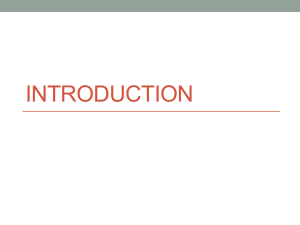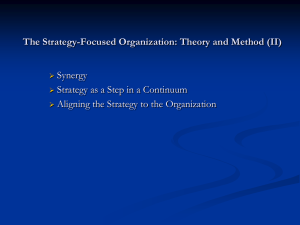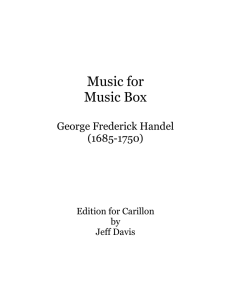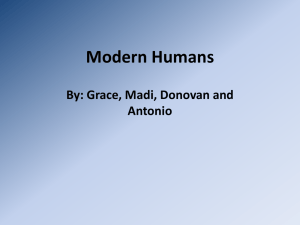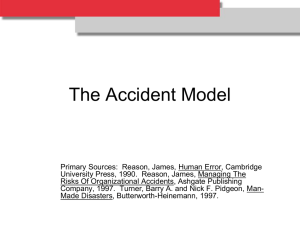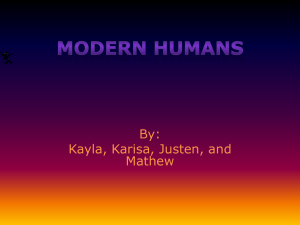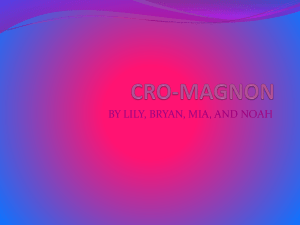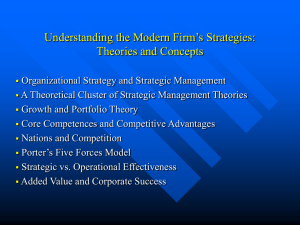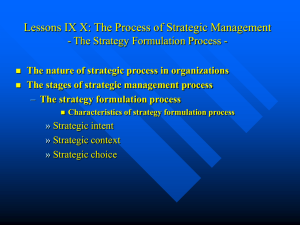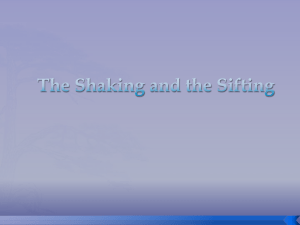Government policy towards elementary schools and history teaching
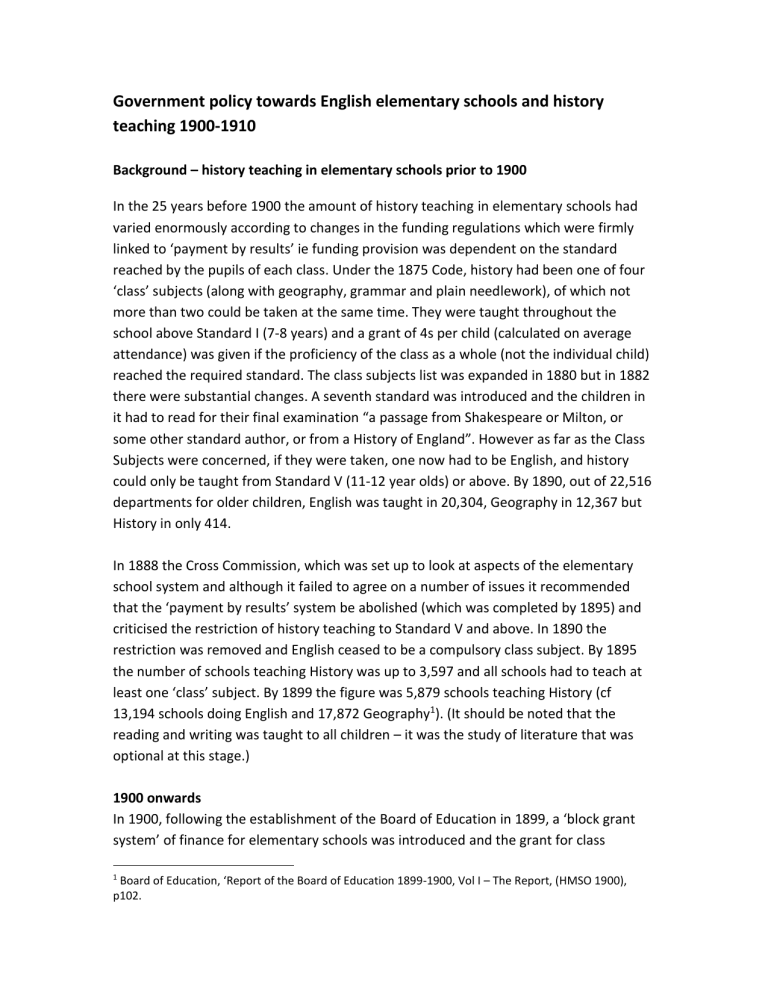
Government policy towards English elementary schools and history teaching 1900-1910
Background – history teaching in elementary schools prior to 1900
In the 25 years before 1900 the amount of history teaching in elementary schools had varied enormously according to changes in the funding regulations which were firmly linked to ‘payment by results’ ie funding provision was dependent on the standard reached by the pupils of each class. Under the 1875 Code, history had been one of four
‘class’ subjects (along with geography, grammar and plain needlework), of which not more than two could be taken at the same time. They were taught throughout the school above Standard I (7-8 years) and a grant of 4s per child (calculated on average attendance) was given if the proficiency of the class as a whole (not the individual child) reached the required standard. The class subjects list was expanded in 1880 but in 1882 there were substantial changes. A seventh standard was introduced and the children in it had to read for their final examination “a passage from Shakespeare or Milton, or some other standard author, or from a History of England”. However as far as the Class
Subjects were concerned, if they were taken, one now had to be English, and history could only be taught from Standard V (11-12 year olds) or above. By 1890, out of 22,516 departments for older children, English was taught in 20,304, Geography in 12,367 but
History in only 414.
In 1888 the Cross Commission, which was set up to look at aspects of the elementary school system and although it failed to agree on a number of issues it recommended that the ‘payment by results’ system be abolished (which was completed by 1895) and criticised the restriction of history teaching to Standard V and above. In 1890 the restriction was removed and English ceased to be a compulsory class subject. By 1895 the number of schools teaching History was up to 3,597 and all schools had to teach at least one ‘class’ subject. By 1899 the figure was 5,879 schools teaching History (cf
13,194 schools doing English and 17,872 Geography 1 ). (It should be noted that the reading and writing was taught to all children – it was the study of literature that was optional at this stage.)
1900 onwards
In 1900, following the establishment of the Board of Education in 1899, a ‘block grant system’ of finance for elementary schools was introduced and the grant for class
1 Board of Education, ‘Report of the Board of Education 1899-1900, Vol I – The Report, (HMSO 1900), p102.
2 subjects was abolished. It was now decreed that in infant schools and classes there should be “suitable instruction in the elementary things” and “simple lessons on common things” 2 . For “older scholars” (ie 7 years upwards) a course of instruction “to be taken as a rule in all schools” included “Lessons, including object lessons, on geography, history, and common things”. However it was stated that “It is not necessary that all these subjects should be taught in every class. One or more of them may be omitted in any school which can satisfy the Inspector and the Department that there is good reason in its case for the omission”.
3
In the Schedules accompanying the Code there is more detail about what the teaching should entail. From this we see that under ‘Reading’, from Standard III (age 9-10) one of the three sets of reading books provided for each class must relate to English History, and from Standard IV one of the books the pupils would be tested on might be a
“history of England” 4 . This was in addition to the actual teaching of history as a class subject. Here the Code states that pupils in Standards I and II (7-9 years old) should be taught “Simple stories relating to English History”. From Standard III (9-10 year olds)there is more detail. these children should be taught:
A) Twelve stories or simple biographies from British History down to 1485, e.g. the
Ancient Britons, the introduction of Christianity, Alfred the Great, the Norman
Conquest, Henry II, Richard I and the Crusades, John and Magna Carta, Edward I, the
Black Prince and the French Wars, the Wars of the Roses
Or:
B) Twelve stories from Early English History, e.g. the Ancient Britons, the introduction of
Christianity, Alfred the Great, Canute, Harold, the Norman Conquest 5 .
In Standard IV (10-11 years) the programme was:
A) Twenty stories and biographies from 1485 to 1688, e.g. the first printing press, the
Discovery of America, Cardinal Wolsey, Henry VIII, Elizabeth, the Spanish Armada,
Drake, Raleigh, Shakespeare, the Pilgrim Fathers, Charles I, Cromwell, Monk, James II.
Or:
B) Twenty stories and biographies from 1066 to 1485, e.g. Hereward, Becket, Richard I and the Crusades, John and Magna Carta, de Montfort and the House of Commons, the
Black Prince, Caxton .
In Standard V (11-12 year olds):
2 Code of Regulations for Day Schools, Education Department (HMSO, 1900), p4.
3 Ibid.
4 Ibid, pp34-35.
5 Ibid, p38.
3
A) Thirty stories and biographies from 1688 to the present time, e.g. William III,
Marlborough, Sir Robert Walpole, Clive, Chatham, Wolfe, Warren Hastings, Captain
Cook, the American War of Independence, Pitt, Nelson, Wellington, the First Reform Bill,
Great Inventions, the Crimean War, the Indian Mutiny, the Growth of Colonies .
Or:
B) The Tudor period, with biographies of leading persons, e.g. the Protector Somerset,
Queen Elizabeth, Shakespeare, Raleigh, Cecil, Drake, Mary Queen of Scots.
In Standard VI (12-13 year olds)
A) History down to 1603, with special reference to the origin of Parliament and the
Union of the British Isles under one monarch.
Biographies of six leading persons
Or:
B) The Stuart period, with special reference to the Civil War, and to the constitution and functions of Parliament.
Biographies of six leading persons.
In Standard VII (13-14 year olds):
A) History from 1603 down to the present time, with special reference to the development of Parliament and the acquisition and growth of the Colonies and foreign possessions of Great Britain.
Biographies of six leading persons
Or:
B) The Hanoverian period, with special reference to the acquisition and growth of the colonies and foreign possessions of Great Britain.
Biographies of six eminent writers or statesmen.
6
There was an alternative simplified and shortened programme of study for schools which only started history from Standard IV, choosing other class subjects to study in the earlier years. It was also possible to combine Geography and History although in practice this appears to have meant studying Geography in the first four standards, and
History in the last three, again in truncated form. A combined History and English course was more imaginative, at least in the first three standards, attempting to use
“conversational lessons on the history of the country, arranged chronologically, and including narratives of striking events and simple biographies of great characters” to
“teach the children the correct use of words and phrases, to increase their vocabulary, and to form simple sentences”. The later standards then had a shortened history course together with lessons on grammar.
6 Ibid, p39
7 Ibid, p42.
4
It was suggested that small schools (average attendance less than 60 excluding infants) be divided into two groups with a considerably simplified programme of study. In the lower stage it was suggested that history might be studied by means of “Simple stories illustrated by pictures” and the second stage would see “A period of history taught chiefly through the lives of distinguished persons, e.g. the Growth of Empire (1688 to the present time) with lives of William III, Marlborough, Clive, Wolfe, Captain Cook, Pitt,
Nelson, and a few stories such as the American War of Independence, Great Inventions, the Indian Mutiny”. And one of the two reading books in the second stage “should relate to English History”.
The overall approach to the teaching in elementary schools was flexible. The accompanying ‘Revised Instructions’ to Her Majesty’s Inspectors stress that: “The greatest freedom possible will be allowed to managers and teachers in planning and carrying out courses of instruction comprising these subjects [ie History and the other lessons]” 10 . So; “At the beginning of each year there must be provided a plan of the work to be done in that year, which should set out in outline schemes of work in the different subjects”. This plan might follow one of the programmes quoted above but could be different if it “was similar to them as to length and clear arrangement”.
11 This plan “should be agreed upon with the teacher at one of your visits of inspection at the beginning of the year, setting out the principal events, the leading characters, and any notable changes in the social and political life of the nation that may be interesting to young scholars”.
12 However it was further stressed that “it should be understood that, if it is necessary in the interests of the scholars, the teacher is at liberty to deviate from any scheme either in the way of omission or enlargement or curtailment of its various parts”.
13
By 1900 the educational Code provided “that time spent during school hours in visiting museums, art galleries, and other places of educational value, or of national or historical interest, may count towards the time required for attendance at school”.
14 The inspectors were told “to encourage such visits wherever such institutions or places exist,
8 Ibid, p53.
9 Ibid, p51.
10 Education Department, ‘Revised Instructions issued to Her Majesty’s Inspectors and applicable to the
Code of 1900’, (HMSO, London 1900), p6.
11 Ibid, p9.
12 Ibid, p27.
13 Ibid, p9.
14 Ibid, p17.
5 and the scholars who are of a proper age to do so should write out an account of what they have observed”.
15 Instructions were given that there should not be more than 15 scholars per teacher on such a visit and not more than 20 visits should be made per year. No visit should be made unless “some person competent to give information of a kind interesting to young children is present”.
16
There are not many specific references to the teaching of history in the inspectors’ reports during these years. In 1899 most of their mentions of history centre on the inadequacies of the readers such as: “Most of the historical and geographical readers are almost devoid of interest, and such dry bones as these simply kill the love of reading”.
17 And another says: children invariably answer better in Geography than they do in History, and at first sight this seems inexplicable. Our school histories record many stirring scenes which are certainly more attractive to the scholars than lists of capes and bays with which geographical primers abound, yet children know the capes, but they do not know history.
His explanation for this was that: “historical readers are compulsory in Standard III and upwards, and I have long been of opinion that our teachers depend too much upon the books, and fail to give adequate oral instruction by way of supplement. And my opinion is fully shared by the best teachers in the district”.
18
Another inspector said:
The chief events of the period selected are generally satisfactorily known, and the most important dates are committed to memory, but the causes and results of these events and the social and political life of the time are not well taught. The biographies of famous men are not sufficiently studied, and good notes by the teacher are rarely forthcoming….This subject, more than any other, suffers from the indiscriminate use of readers .
19
Some inspectors were quoted in the Board of Education’s annual report of 1900-1901 hoping that the New Code would encourage the teaching of History and Geography “on broader lines than at present” as Mr Wilkinson of the Newton Abbot district put it.
20 . A year later the inspectors’ reports were generally positive. There was a definite feeling
15 Ibid.
16 Ibid, p18.
17 Board of Education, ‘West Central Division, General Report for the year 1899’ by TD Aldis, Chief
Inspector (HMSO 1900), p12.
18 Ibid, pp12-13.
19 Ibid, p13.
20 Report of the Board of Education 1900-1901, Volume I – The Report, (HMSO 1901), p135.
6 among them and the head teachers that the new Block Grant system meant a freeing up of the curriculum. Mr Oliver in the Eastern Division was quoted saying: “Greater attention is being paid to English history, the basis of instruction being a brief outline of main events for the lower classes, and a more detailed knowledge of a period – usually the reign of Victoria – for the upper classes”.
21
Mr Swinburne of the same Division was extremely enthusiastic about the freeing up of the system and the diminished importance of examinations: “A slight loss of accuracy is a trifling price to pay for so great an advantage”, and said that “It is gratifying to note how children now begin to learn to use dictionaries, atlases etc instead of uselessly trying to convert themselves into similar lists of names, places etc”, although he criticised those who still “shrink from excursions, etc, because there is ‘nothing interesting in the neighbourhood’”.
22 Subsequent comments reveal the insecurity of elementary teachers – those in Cambridge are later singled out; they “seem afraid to undertake visits to Museums, although the place gives exceptional advantages for doing so”. Talking to them, “some tell me that they would not like to explain objects to their classes because there would generally be experts near at hand who would easily detect any mistakes that they might make while others say that they are not sure of the kind of reception that they would meet with on the part of the Curators and the University
Authorities generally”. 23
As far as history was concerned Mr Swinburne was still critical:
Of course, the history books with all their improvements, have not yet quite shaken off the old craving for gossipy, domestic details; the minute sub-division of periods which is useful enough to university students; and the ‘free and easy’ handling of great names, which does not tend to the reverence, the want of which we all equally deplore among children of the Elementary School class. Above all, the wealth of local illustration at the command of every rural schoolmaster is not sufficiently drawn upon....Like home-made illustrations which, however rude, are generally the best, home-made lists (after a study of two or three good text books, etc) are the most effective.
24
Other comments from Eastern Division inspectors included:
Crabbed and tedious old books, legacies of the Old Code, which managers think are in too good a condition to be changed for newer ones, are responsible for a good deal of the lack of interest in the subject, which is often evident. The compilers of many of the
21 Board of Education, ‘General Reports of HM Inspectors on Elementary Schools and Training Colleges for the Year 1902’, (HMSO, London 1903), p74.
22 Ibid.
23 Ibid, p91
24 Ibid, p75.
7 new books, whether they broadly divide the History of England into two or three periods or give a sketch of the making of the British Empire and the chief events which led to it, in one volume, have been imbued with quite the right spirit in giving just what an English child should learn .
25
History as an oral subject of instruction is almost new in country schools, and the results of the teaching cannot yet be considered satisfactory. There is no doubt of its popularity with children where it is well taught. It is often difficult to arrange for a complete course in the country school of average size, but the schemes submitted to me are improving in this respect.
26
The schemes and syllabuses in history and geography need very great care...The courses proposed too frequently show no regard to the interdependence of the two subjects; sometimes a proper sequence of study from year to year is not provided for, or too much detail is included, or, as often in history, there is the fault of desultoriness and want of connection...Each year’s work should obviously possess a unity of its own, and be so planned as to impress clearly on the children a few essential and characteristic facts and principles..
27
Another again applauded the principles of the new Code and particularly linked them to the study of history and geography:
[It lays down] a general elementary curriculum for the whole country as a sound foundation for further progress...allowing within the limits of that curriculum the greatest liberty to teachers to vary details, and especially the amount taken in each subject, according to the staff and appliances of the school, the circumstances of the neighbourhood, and the capacity of the scholars. To take an instance: the Code simply says that lessons must be given in geography and history – surely not unnecessary subjects for those who are to be citizens of a great Empire; this seems the wise mean between the two extremes of laying down in detail a set course to be taken in all schools and of leaving it to a chance majority in any district to determine whether these subjects shall be taught at all. The latter course could only land us in that most specious and mischievous of all modern educational dangers – premature specialization...
28
More comments from inspectors (these from the North-Eastern Division of England):
This [history] is now one of the most interesting subjects...Some of the history readers are delightful for children. A few are full of difficult words and involved sentences, and
25 Ibid, p77.
26 Ibid, p81.
27 Ibid, p85.
28 Ibid.
8 the charm of the lesson is lost to a child in the load of explanation necessary 29
(Northumberland)
I have sometimes been puzzled, in schools where history is taught through a readingbook, to discover without reference to the time-table whether a lesson was one in history or in reading, lessons marked on the time-table as reading being overburdened with questions on the historical subject-matter, and lessons marked as history being taken up with the correction of faults of phrasing.
30 (Wakefield District)
The children are attentive and interested while their teachers are talking to them [of history and geography]; but, except in the best schools, very little of the information is returned to the teacher; the children appear to remember scarcely anything. One head teacher’s view is that it is not necessary that the children should be able to answer questions on these subjects nowadays 31
In the South-Western Division there was some debate about the increased breadth of the curriculum and the problems of fitting it into a limited time without a diminution in standards. The chief inspector in this division said: that the scheme of work in arithmetic, geography, and history is almost always too large and too detailed for rural schools, too ‘secondary’ in fact for any but the quasisecondary urban schools…..as to history, a general outline is all that is either possible or desirable. The practice of studying this subject in periods, Early, Plantagenet, etc, is only adapted for schools composed of a corresponding number of classes, which are almost exclusively urban schools, and it involves an amount of detail of a sort quite foreign to the mind of the Elementary scholar. Nothing can be quite so mournful than to see little unfortunates, on their first introduction to history, laboriously spelling their way through statements in journalese English about the policy of Sir Robert Walpole, because, forsooth, ‘We are taking the Hanoverian period’.
32
There was discussion in many of the reports about the practice of using readers to teach history. On the whole oral instruction – presumably the teacher talking off-the-cuff to the pupils – was seen as superior but as an inspector from Bournemouth pointed out
“The oral instruction in Geography, History and Science cannot be said to be universally successful. Many classes are far too large for oral work, and the back rows never answer”.
33 Another inspector said that “in history the teacher is sometimes very little
29 Ibid, p20.
30 Ibid.
31 Ibid.
32 Ibid, p115
33 Ibid, p116.
9 ahead of the class, and very often the oral exposition is weak and the questioning puerile, not calculated to appeal to the child and stimulate further reading”.
34
The Code of 1902
In 1902 the Board of Education announced a new elementary school code. The revisions made represented a considerable quiet liberalisation of teaching. Teachers still had to provide a plan of work for the year in each subject but it was emphasised even more strongly that it was perfectly acceptable, if it was necessary “in the interests of the scholars”, for the teacher to deviate from this scheme “either in the way of omission or enlargement or curtailment of its various parts”.
35 It was stressed that there must be good record-keeping of what was being taught – notebooks for the teachers to record the chief oral lessons, a head teacher’s record book to keep track of the quality of the work as evidenced by “periodical examinations” and “progress or mark book” showing the “the individual conduct, application and advance” of each scholar. “But such records should not hamper a teacher in varying the work of the school nor be so detailed as to demand an undue amount of clerical work”.
36
Schools were now awarded one of two grant levels depending on how they fulfilled certain criteria which reflected on whether or not they could be judged “a good school”, rather than satisfying “rigid tests”. There were four areas which were to be considered – a school was likely to be awarded the higher grant if it satisfied three of them. These covered the suitability of the instruction to the circumstances of the children and the neighbourhood; the thoroughness and intelligence with which instruction was given; the sufficiency and suitability of the staff; the discipline and organisation of the school. The
Revised Instructions to the Code also explicitly criticised corporal punishment; in infants’ schools no punishment “which causes bodily pain” should ever be permitted and for older schools it should “be discouraged as an ordinary expedient in boys’ schools, and altogether in girls’ schools”.
37
No longer was there any detailed list of what should be studied, “teachers now have to consider for themselves what shall be the scope of their instruction and what are the best methods to pursue”.
38 They could keep on teaching as they had always done or they could introduce any innovations they chose. The schemes for teaching which had previously included considerable detail about what periods and people should be
34 Ibid, p139
35 Board of Education, ‘Revised Instructions applicable to the Code of 1902’, (HMSO, London 1902), p5.
36 Ibid.
37 Ibid, p8.
38 Ibid, p6.
10 studied, especially for the older groups (see above), now merely said “Study of contents of Historical reader with oral exposition” 39 or “Simple oral lessons on great
Englishmen”.
40 The most prescriptive suggestion was now “Stories from English History
1066-1485”.
41
Examinations were not to be too frequent and the Revised Code said the class teacher
“can hold them with more useful effect than a stranger”; it was the teacher who needed to know if their instruction “has gone home”.
42 Indeed there were to be no more inspectors’ examinations of individual children except in certain exceptional circumstances. The inspector would simply observe, ask the children simple questions and look at their written work. The result would be that: the children may be taught less and learn more…the teacher should endeavour to make the children observe, and infer for themselves and should be less anxious to convey to their minds ready made information. Progress may be slow but it will be real and permanent, and the children will know how to gain information for themselves. Next their memories will not be burdened excessively. Children learn by rote with great ease and imitate readily…[the teacher] should train them not to learn mere strings of isolated facts but to notice the connection of one fact with another.
43
Visits to museums and other institutions during school time were still permitted as long as the approval of the inspector was obtained but it was stressed that the object of the expedition must be “educational and not merely recreative” 44 To test of the value of the trip it was suggested that the children should give an account of their visit.
By now (1903), almost all elementary schools were teaching history (23,053, cf 23,295 which taught reading, writing and arithmetic, the compulsory subjects, and 719 which taught French 45 ). The 1902 Education Act (Balfour Act) had set up local education authorities which were now in charge of maintaining and running all the elementary schools as well as the new secondary schools. The Board of Education took the opportunity to revise the Elementary School Code again. It would now be: a properly co-ordinated curriculum suitable to the needs of children, with an indication of the relation which the various subjects of instruction should bear to each other, in
39 Ibid, p22.
40 Ibid, p23.
41 Ibid, p27.
42 Ibid.
43 Ibid, p7.
44 Ibid, p11.
45 Board of Education, ‘Report of the Board of Education for the Year 1902-1903’ (HMSO, London 1903), p27.
11 place of the relatively haphazard list of possible branches of knowledge which were formerly presented to the choice of individual schools or authorities
46
The only guidance in the 1904 Code for Elementary Schools given for History was that it should comprise “a general knowledge of the great persons and events in English
History and of the growth of the British Empire” 47 and “instruction in History and
Geography need not be given to infants”.
48 However, in the Board’s ‘Suggestions for the
Consideration of Teachers and others concerned in the work of Public Elementary
Schools’ which came out a year later there was a great deal of detail about what might be taught. This is italicised this because the authors were insistent that none of this was really compulsory. They said they had: endeavoured to indicate the principles which should underlie the teaching of each of the subjects, and in certain cases schemes have been added which show in outline how those principles could be applied in framing a syllabus. These schemes are not designed to be more than examples of method in the treatment of subjects on certain definite principles.
49
They continued:
The only uniformity of practice that the Board of Education desire to see in the teaching of Public Elementary Schools is that each teacher shall think for himself, and work out for himself such methods of teaching as may use his powers to the best advantage and be best suited to the particular needs and conditions of the school. Uniformity in details of practice (except in the mere routine of school management) is not desirable even if it were attainable. But freedom implies a corresponding responsibility in its use”.
50
In fact, although the ‘Suggestions’ were not compulsory they included the first sustained government guidance for those teaching history. In the preamble of the main document it was firmly stated that “the establishment of character must always be one of the main aims of Elementary Education” 51 and History was strongly urged to play a part in this.
Teachers were told that History should be taught “to younger scholars”: orally through a series of biographies of typical heroes or heroines. These should be treated in the main with a view to illustrating in the action of real persons the principles of conduct and qualities of character which promote the welfare of the individual and of
46 Board of Education, ‘Report of the Board of Education for the Year 1903-1904’ (HMSO, London 1904), p15.
47 Board of Education, ‘1904 Code of Regulations for Public Elementary Schools with Schedules’, (HMSO,
London 1904), p1.
48 Ibid, p2.
49 Board of Education, ‘Suggestions for the Consideration of Teachers and others concerned in the work of
Public Elementary Schools’, (HMSO, London 1905), p5.
50 Ibid, p6.
51 Ibid, p8.
12 society. The lives of great men and women, carefully selected from all stations in life, will furnish the most impressive examples of obedience, loyalty, courage, strenuous effort, serviceableness, indeed of all the qualities which make for good citizenship. The teacher should place in relief those actions of his heroes or heroines which exhibit their higher qualities, but should take care not to raise them too far above the level of common humanity by the omission of their faults or short-comings 52
Note the careful emphasis on the inclusion of both men and women, ‘from all stations in life’, who would offer a strong moral example without seeming impossibly virtuous. It would have been a considerable challenge for junior elementary school teachers to find such people in amongst the lists of male monarchs and generals they had previously been adjured to teach about. In their detailed comments on history the Board authors considered this. They admitted that school history teaching: in the past has been too much confined to accounts of wars and battles, and narratives of the doings of great kings and nobles, and has not dealt sufficiently with the life of the people as a whole.
To combat this:
Care should therefore be taken that the lessons deal with the triumphs of peace as well as those of war, and for this reason such events as the discovery of America, the invention of printing, the abolition of slavery and the change of life in recent times effected by scientific discoveries should have a prominent place in every wellconsidered historical scheme.
53
The authors also admitted that teaching history in all schools was a difficult task – “the wide scope of the subject, the doubt in which many past events are involved, and the controversial aspect of not a few historical questions” 54 – but was particularly hard in elementary schools where the teaching must be simple but not superficial and where most teachers had no time or opportunity for independent study or research on historical issues but must rely on textbooks. However they felt that there were strong reasons for giving history “an important place” in the school curriculum:
the “rights and duties” which all children in Great Britain will one day exercise can only be understood by knowledge of how they arose, “the scholars are not too young to be taught what a debt they owe to the forefathers who won the Great Charter of British liberties and sowed the seeds from which our modern Parliament has sprung”.
55
the children know from geography that Great Britain is only “one country among many others”. From history lessons “they should learn something about their nationality
52 Ibid, p9.
53 Ibid, p62.
54 Ibid, p61.
55 Ibid.
13 which distinguishes them from the people of other countries. They cannot understand this, however, unless they are taught how the British nation grew up, and how the mother country in her turn has founded daughter countries beyond the seas”.
56
the need to learn about the great personalities who have influenced the past – for evil as well as good
As far as the way of teaching was concerned, the Board did not prescribe a particular method:
All methods will lie in the range between the strictly ‘concentric’ and the strictly
‘chronological’ method…In the concentric method the story of a people, or a prescribed period of it, is successively treated in its different historical aspects…Where the chronological order is strictly adhered to, attention should at first be concentrated solely on persons and events; but as the story proceeds, the teaching may gradually become wider and more detailed.. For children in English schools the chief interest in history will rightly centre in the stirring events and in the striking qualities of the central figures of our own history, but it is important that in dealing with times of conflict with other peoples, the teaching should do full justice to those who are national heroes in other countries 57
On a practical level – infants should simply be told stories, perhaps with a historical theme. For the first couple of years of the main school (7-9 year olds): the instruction should be purely oral. The lives of some famous men and women should be told as brightly and as picturesquely as possible…Material for such lessons exists in abundance in the Bible, in the Homeric Poems, in early Greek and Roman History, in the
Stories of the paladins, in Froissart, in Shakespeare’s Historical Plays, in the Stories of
Elizabethan Voyages and elsewhere 58
All the teaching should have the effect of making the stories vivid and dramatic, designed to hold the interest of the children. A globe or map of the World should be used.
In the third year (9-10 year olds) “The lives of the great men and women of English
History should now be taken” – preferably in chronological order. Again the stories should be told orally and the treatment be “dramatic and impressive”.
59 They might be followed by the reading of a suitable well-illustrated history book. Pictures, lantern slides, the teacher’s own blackboard sketches and diagrams should all be used together with a map of England, preferably a photographic reproduction of a relief map. Every
56 Ibid.
57 Ibid, p63.
58 Ibid, p119.
59 Ibid, p120.
14 child should be asked to repeat one of the stories in his own words at least once during the year.
For the fourth year (10-11 year olds), a similar pattern of teaching should be followed
“but attention should be drawn to the lasting results of the lives and acts of the great figures of English History in order to bring out the influence of past events in shaping the present state of the British people”.
60 Towards the end of the year school journeys to accessible places of historical interest might be made, and the scholars should now start writing compositions “with reference to the history lessons”.
During the last three years of elementary school (11-14 year olds), “the teaching should become more formal, more continuous and more systematic”.
61 The oral teaching remained “indispensable” but should be supplemented by the study of a very well written and well illustrated history book. Teachers were advised to ask the pupils to prepare particular topics from the book in school or at home and then test their knowledge of the subject by questioning them and asking them to describe the topic in writing or speech, ensuring that rote-learning was not promoted. The Board authors offered three suggested “schemes” of study for these last years but emphasized that what could be taught and what would be achieved depended very much on a number of factors – how long the children remained in school, their general intellectual level, the ability of the teacher, size and facilities of the school and so on.
The first Scheme was based on the ‘Concentric’ method: during each of the three years an outline of British history would be taught “with increasing fullness and exactness” every year so that if a child left school early he or she would still have a basic idea of the development of British history. As well as oral teaching and the study of a historical reading book, it was recommended that patriotic poems, ballads, suitable poems, historical tales and national songs should also form part of the lessons. In the final year it was suggested that “a more minute study might profitably be made” 62 – preferably closely relating to the school’s locality e.g. the
North of England – the Industrial Revolution; the Midlands – the Civil War.
The second Scheme adopted the chronological approach – the history of England was divided into three chronological periods, one for each year (5 th year – British
History up to 1485; 6 th – British History 1485-1688; 7 th – 1688 – present). “Stress
60 Ibid.
61 Ibid.
62 Ibid, p124.
15 to be laid on the sequence of cause and effect so that the reason as well as the memory may be trained”.
63
The third Scheme “is more ambitious in its scope and more specialised in character than either of the other schemes” and had been found suitable for well-staffed schools with pupils of above average attainment who had already received a good grounding before the 5 th year. One year was given entirely to
European History, the next to the growth of the British Empire and to local history and the last to Citizenship and a special period (e.g. the reign of Elizabeth or the Long Parliament).
It was stressed that for all lessons: various aids may be adopted which add much to the effectiveness of the teaching.
Illustrations in the form of pictures, photographs, lantern-slides, old coins and prints are useful in stimulating interest; and the drawing of maps, sketches, diagrams, and chronological summaries on the blackboard…are a most powerful means of giving vividness and reality to the teaching. Historical albums are also useful. The reading to the class from time to time of striking passages from original authorities and of stirring descriptions from the brilliant pages of writers like Macaulay and Froude will deepen and intensify the effects of a lesson . Collateral reading by the children…of books, tales and poems; the learning of poetical extracts and of national songs connected with the period studied are all helpful aids which no teacher should discard. The importance of visits to historic spots – an old castle, abbey, a battlefield, a cromlech or a hill-camp – need not be emphasised….In all the teaching it should be the aim not only to impart information, but also to stimulate in the pupil an appetite for increased knowledge of the subject which will outlast their school life.
64
After this lengthy discussion of history teaching in elementary schools there was little government guidance on it for the rest of the decade apart from a brief mention in some of the later Codes of Regulations that it would approve a “less advanced” syllabus for arithmetic, history and geography in country schools if the time gained was devoted
“to nature study and practical subjects suitable for country children”, and in some town schools if the extra time was devoted “to hand and eye training”.
65
Conclusion
63 Ibid, p123.
64 Ibid, p122.
65 Board of Education, ‘1907 Code of Regulations for Public Elementary Schools in England (exclusive of
Wales and Monmouthshire) with Schedules, (London HMSO, 1907), pp4-5.
16
Looking at these government documents there appears to have been a tension between those who wanted a relatively laid-down curriculum and those who believed that schools should be left with the flexibility to teach in their own way. The later Codes were much less rigid than the earlier ones but the ‘Suggestions’ of 1905 laid down some fairly definite syllabuses even though these were not compulsory. The Board of
Education officials were presumably aware that in inner city and remote country schools where very poor and deprived children were taught in large classes, there was not much likelihood of innovative or imaginative teaching but, particularly for the older children, they wanted a blueprint to exist for those teachers who did have the energy and resources to devote to history and the other class subjects.
Jenny Keating
History in Education Project
Institute of Historical Research
University of London
March 2009
